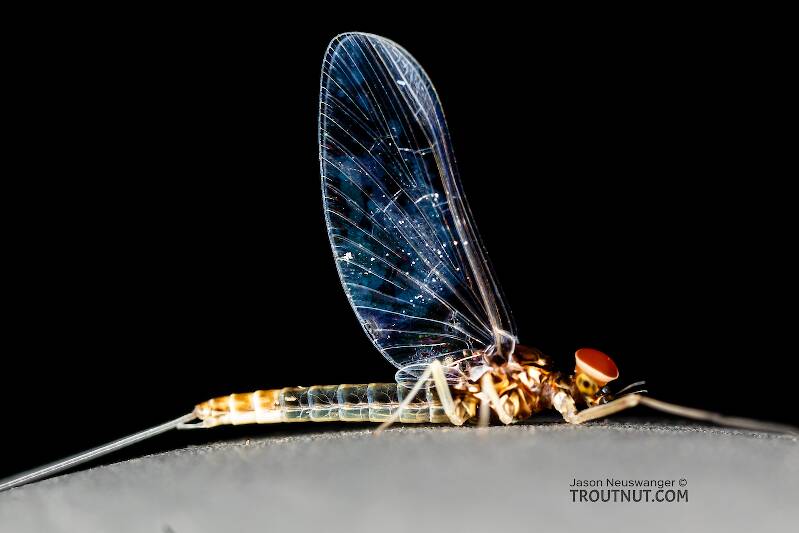
Salmonflies
Pteronarcys californica
The giant Salmonflies of the Western mountains are legendary for their proclivity to elicit consistent dry-fly action and ferocious strikes.
Featured on the forum

This is an interesting one. Following the keys in Merritt R.W., Cummins, K.W., and Berg, M.B. (2019) and Jacobus et al. (2014), it keys clearly to Ephemerella. Jacobus et al provide a key to species, but some of the characteristics are tricky to interpret without illustrations. If I didn't make any mistakes, this one keys to Ephemerella mucronata, which has not previously been reported any closer to here than Montana and Alberta. The main character seems to fit well: "Abdominal terga with prominent, paired, subparallel, spiculate ridges." Several illustrations or descriptions of this holarctic species from the US and Europe seem to match, including the body length, tarsal claws and denticles, labial palp, and gill shapes. These sources include including Richard Allen's original description of this species in North America under the now-defunct name E. moffatae in Allen RK (1977) and the figures in this description of the species in Italy.

Troutnut is a project started in 2003 by salmonid ecologist Jason "Troutnut" Neuswanger to help anglers and
fly tyers unabashedly embrace the entomological side of the sport. Learn more about Troutnut or
support the project for an enhanced experience here.

Some notes from identifying this specimen under the microscope:
1. The hind wing has three longitudinal veins, but the third is faint, short (about half the length of the wing), and close to the wing margin.
2. Then antenna is brown fading into white at the tip, and the base is ringed with white.
3. The joints of the tarsal segments on the middle and hind leg have fine black markings.
It was also collected in association with a female spinner.
1. The hind wing has three longitudinal veins, but the third is faint, short (about half the length of the wing), and close to the wing margin.
2. Then antenna is brown fading into white at the tip, and the base is ringed with white.
3. The joints of the tarsal segments on the middle and hind leg have fine black markings.
It was also collected in association with a female spinner.
Troutnut on Nov 6, 2020November 6th, 2020, 3:16 pm EST
Does anyone here know any decent resources for identifying adult Baetis? I haven't found much.
This specimen sure seems to nicely fit the original description of Baetis alius adults. But I can't find very precise descriptions (let alone a key) for flavistriga and tricaudatus, both of which are other likely options given the location.
These made for a good fishable hatch on Silver Creek, so it sure would be nice to know what they are.
This specimen sure seems to nicely fit the original description of Baetis alius adults. But I can't find very precise descriptions (let alone a key) for flavistriga and tricaudatus, both of which are other likely options given the location.
These made for a good fishable hatch on Silver Creek, so it sure would be nice to know what they are.
Jason Neuswanger, Ph.D.
Troutnut and salmonid ecologist
Troutnut and salmonid ecologist


